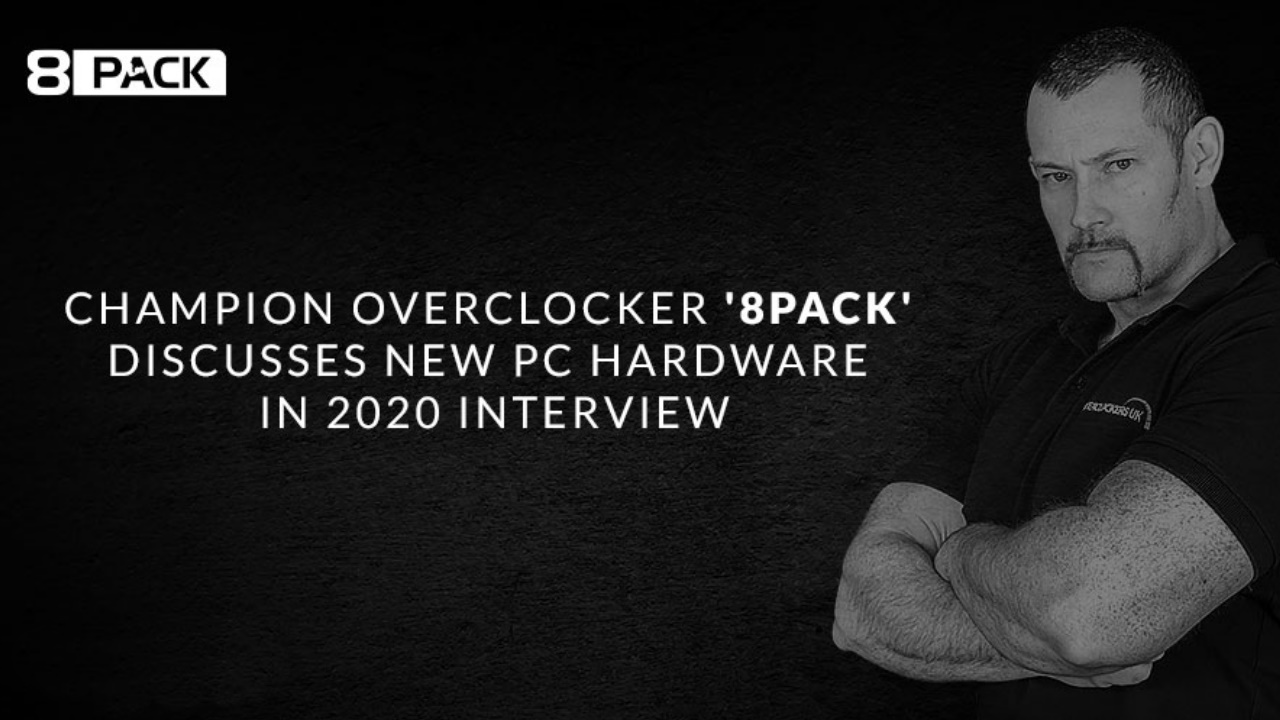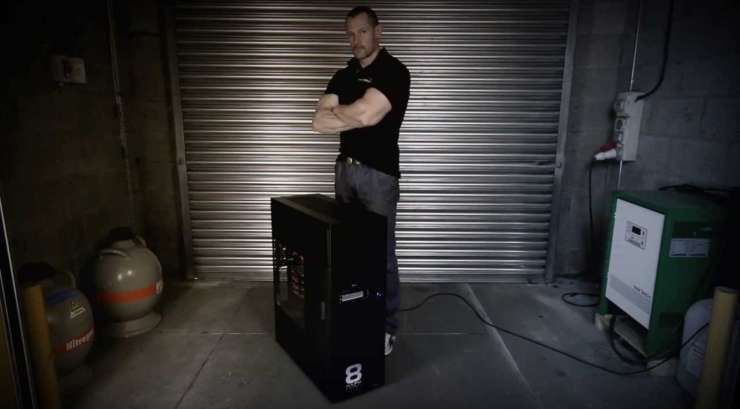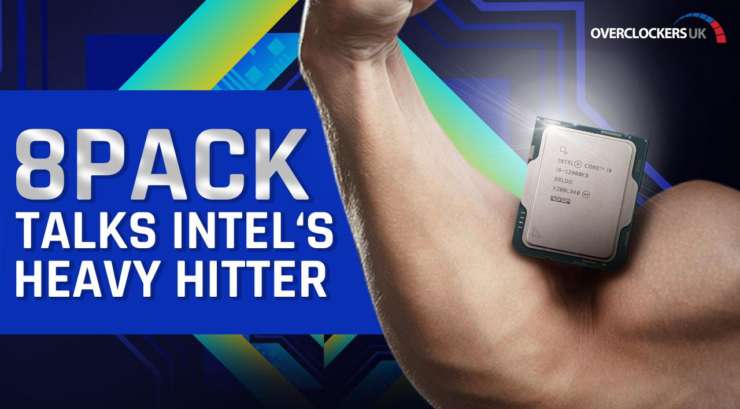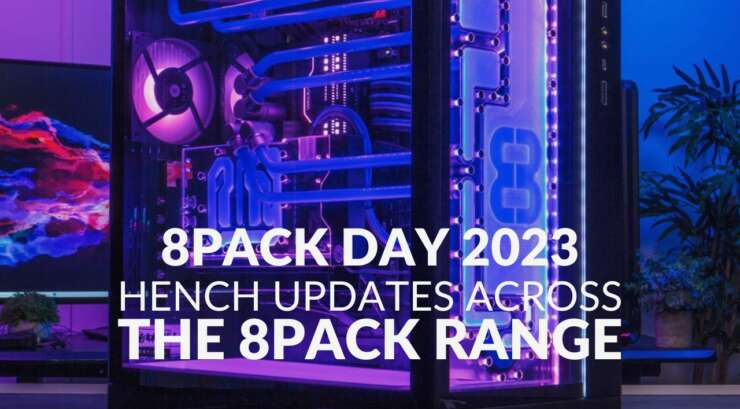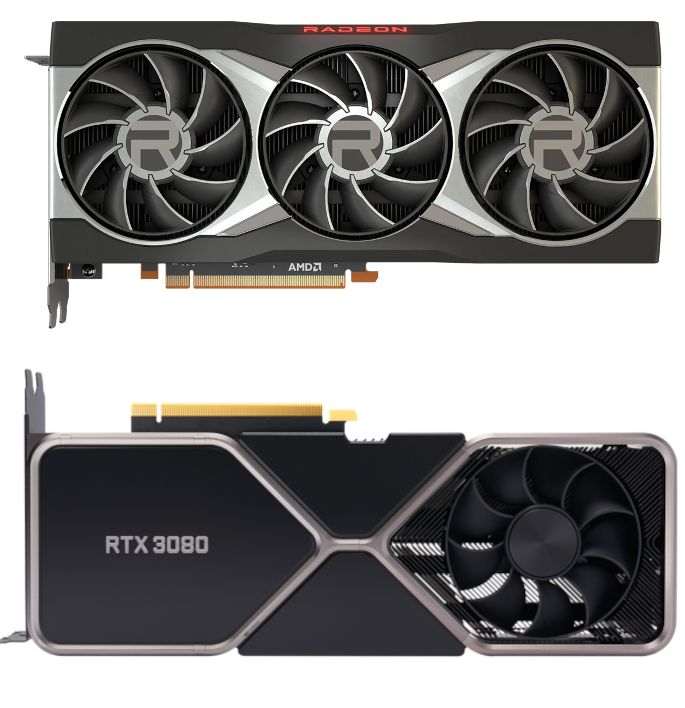
2020 has been a particularly busy year for hardware launches with both graphics cards and CPUs being delivered from the two tech titans: AMD and Nvidia. The generational leap has been huge, demand is unprecedented, and there’s no denying the performance has just been incredible.
With that said, this year has been anything but ordinary. Luckily 8Pack has been able to use the downtime to get to grips with the latest technology and spend endless hours testing, benchmarking, building, and pushing the limit of pretty much any hardware he could get his muscley hands on.
In this special interview, Briony from Overclockers UK delves deeper into what makes 8Pack tick. She reveals his opinions on new hardware, the latest games, favourite components, and most importantly RGB lighting. There’s also a quick tease on what we can expect from the incredible 8Pack systems in 2021.
The History of 8Pack
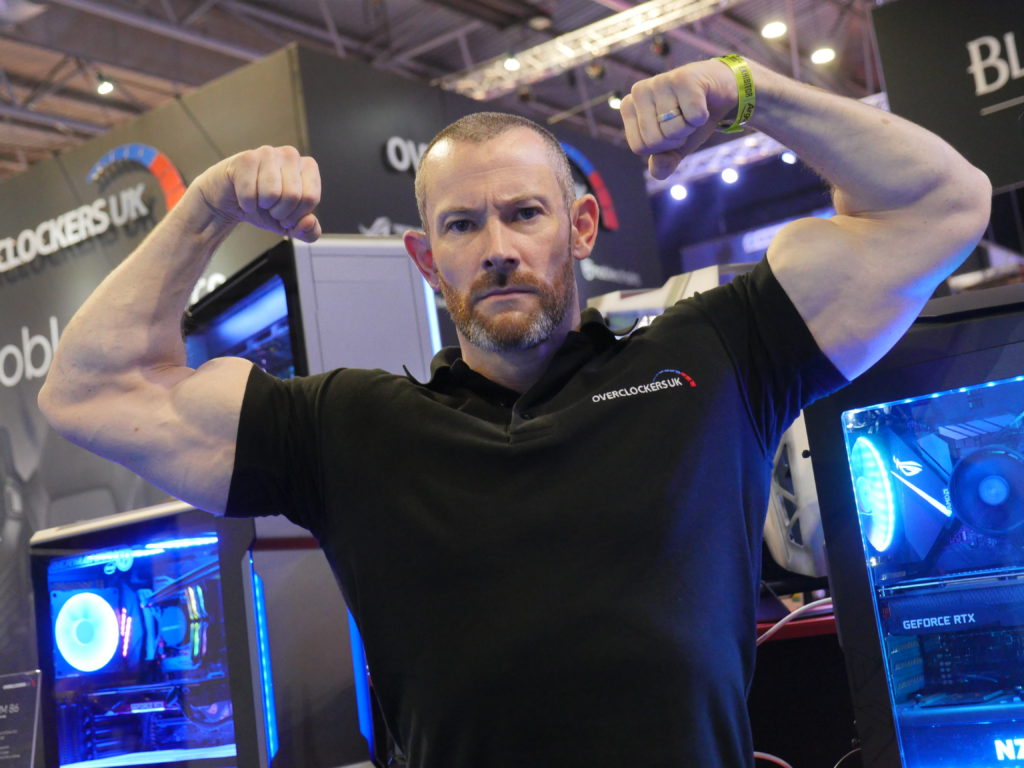
When did you first join the overclocking scene?
I started overclocking around 20 years ago and bought my first gaming PC from an electrical store and ran 3D mark 01. I compared the score my PC achieved to similar systems and was disappointed with the result. I thought the performance was terrible and wanted to know why. This pushed me into improving my score. To do this I began reading around overclocking and experimenting with Bios and hardware mods.
What got you interested in PC hardware?
Definitely gaming. I invested in my first PC to play games like Half-life and Battlefield.

What inspired you to become an extreme overclocker?
I would describe myself as an extreme personality and I always aim to be the best. From the start, my interest was to compete in computer hardware benching. I knew better cooling would help improve my clocks and I slowly began increasing the cooling available for my benchmarks. This meant I started out using air but progressed to water, phase change, and finally liquid nitrogen. What I’d learned about tuning benches on air could be applied to the other cooling techniques. This helped me to move up the online leaderboards quickly using that same knowledge.
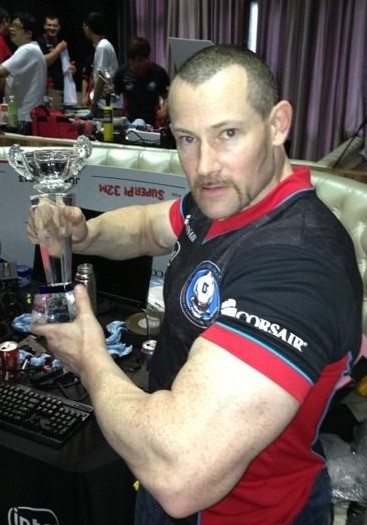
What’s your most memorable Overclocking achievement?
This is a difficult one. Bursting onto the scene and winning the Intel overclocking contest at my first Computex was certainly up there in terms of live overclocking.
In terms of scores posted online. I once had the entire front page of HWbot filled with only my scores. I posted many record-breaking CPU and GPU benchmarks in one day. Which meant I held a total of 15 world records!
Finally, I was the only person to ever have over 4000 points at the top of the world OC rankings on HWBOT.
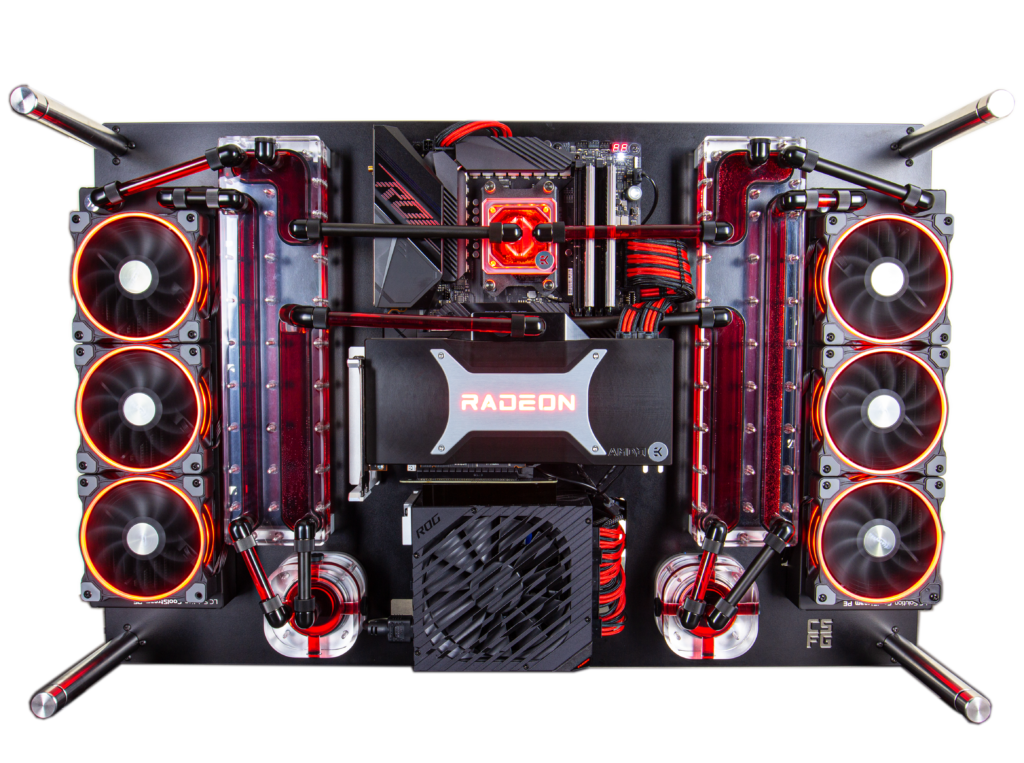
What larger projects have you worked on?
I have worked on full data centre projects full of overclocked servers for Formula one teams wanting an on-track advantage. I’ve also helped create full racks of render nodes for VFX companies wanting to get the next movie out ultra-fast. There are many examples of these types of large scale projects. No project is too big for the 8Pack brand and Overclockers UK.

Out of all the hardware you’ve used in the 8Pack systems what was your favourite component?
This is a really difficult question. Over the years I have benched some great hardware. The 8Pack GTX 980 GPU was a particular favourite though. I helped in the design process of this card and also in the Bios formulation and testing. I then used it to take all the world records in 3D mark and Heaven. I also won the Galax live OC contest that year using that particular card.
The most challenging thing about extreme benching is definitely four GPUs and a CPU all cooled by LN2. You have to control the temperatures of each piece of hardware to within a few degrees.
The Galax live OC contest was the last series which included 4-way SLI. This made it more appealing to the overclocker who likes a challenge. That is to say, GPU overclocking on LN2 is less interesting since the launch of the RTX 980Ti. This is because Nvidia has locked out the possibility to push to crazy extremes in the Bios.
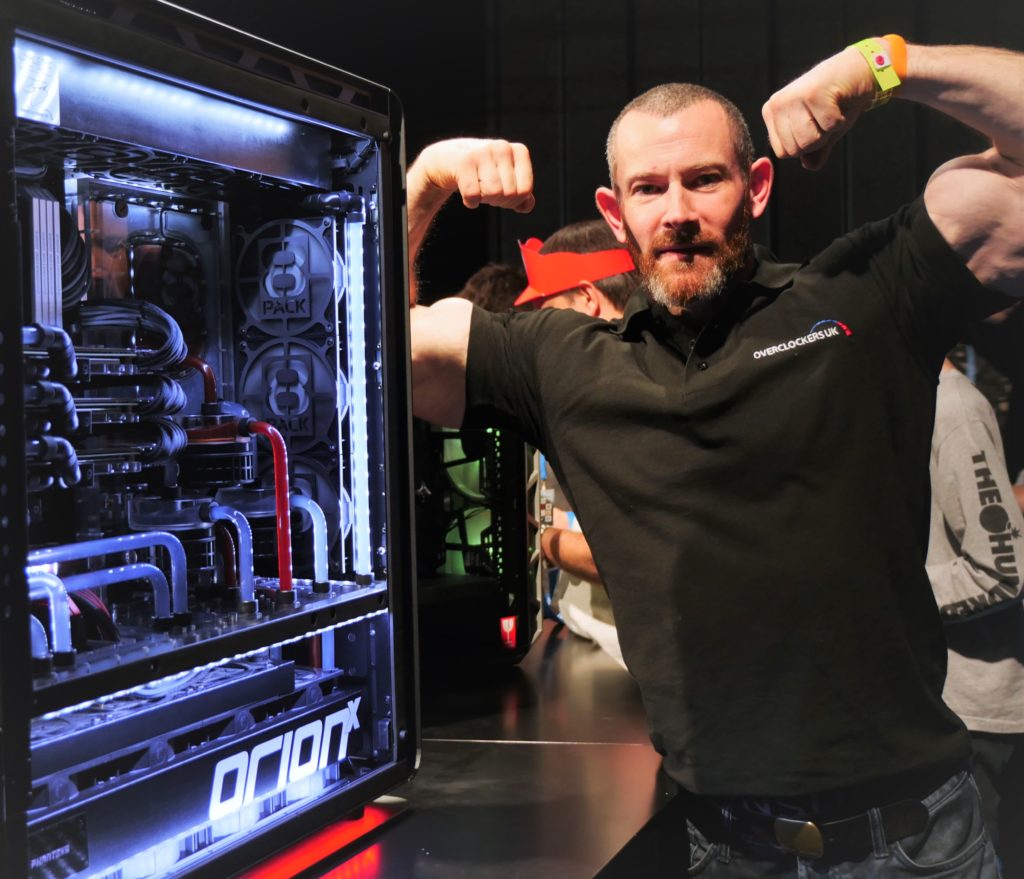
What’s the most expensive or most memorable 8pack system you remember creating to date?
Orionx2 is certainly the most expensive computer we have ever produced. The most a customer paid for a modded version was in excess of £40,000!
I would say the X1 version of the OrionX was probably the most memorable system.
OrionX brought together several new concepts when it comes to PC modding and water-cooling. Many of them had never been done before in one system. As a system integrator, it’s impressive to build something inspired by the modding community and make it available to a wider audience. I feel like that is a great achievement by the 8Pack team.

What was the most technically challenging 8Pack PC to build?
The most difficult PC to build is OrionX2. This is effectively two 8Pack class machines in one chassis. It’s literally a Supernova and a Comet in one. It has triple-layer pass-throughs instead of dual-layer. There are three separate cooling loops plus all the radiators and fans needed to keep the components cool. You’ve also got double the amount of sleeved cables and binned hardware.
It’s so complex, that during the build process it must be assembled in a certain way to fit in the chassis. To help you imagine the scale of this PC, the OrionX2 needs over 120 compression fittings for the hardline water cooling. The average PC build will only need around 10.
8Pack in the Present
RGB lighting: Do you love it or hate it?
I used to hate it… now I just accept it. It’s another way to personalise a system and for that its fine. My main beef with RGB is not about the concept. It’s the massive variety of ways it’s been adopted and the array of software you need just to control one system. It should have been licenced and all software should be standardised for anyone who wants to use it. At OcUK in the system integration department, this lack of standardisation causes massive issues. The software from different manufactures can conflict. This means the hardware can crash as a result. I’m certain that no Blackpool illumination style lighting display is worth an unstable system.
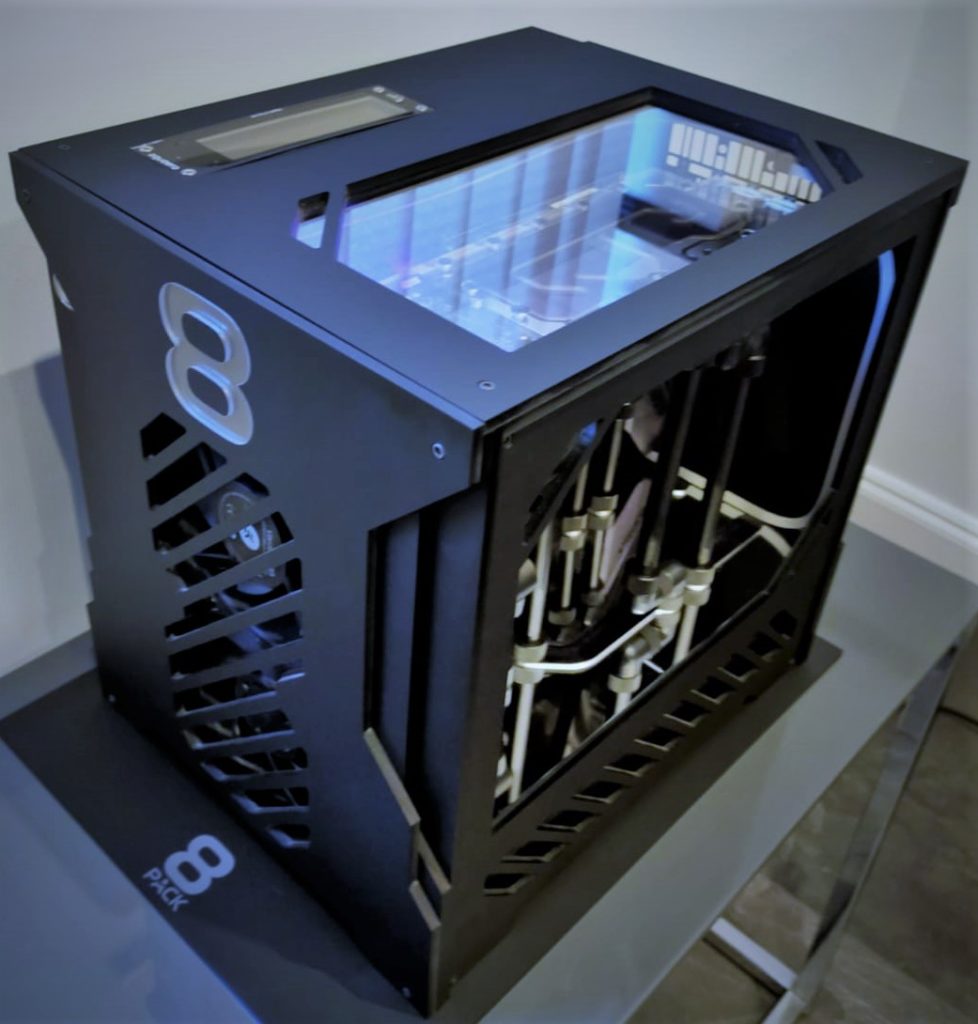
What specifications are you rocking in your own personal system?
At home, I’m currently using an ITX system.
- My processor is an Intel 9900KS at 5.3ghz with a 4.9ghz cache.
- The motherboard is an ASUS Z390 Strix I with 32GB of 3600mhz RAM.
- The graphics card is an RTX 3090.
- For storage, I’m using a Samsung NVME drive.
- Of course, the system is fully water-cooled and overclocked.
I use this PC for gaming and as a media server for Roon and Emby. I don’t need more than 8 Cores on my CPU. However, I am building a new system right now at home on lockdown. This will be an 8Pack range PC in the near future! It uses an AMD 5950x, 32GB of RAM and an AMD 6800XT.

What do you think of the new AMD Ryzen 5000 processors?
The new AMD processors are very solid. AMD over the last three generations has slowly been progressing its IPC. Whilst they have been the multi-core leader for a while it’s this IPC that gives them the lead in gaming. AMD now has the lead performance-wise in all workloads.
From an overclocking point of view, it depends what workloads you are running in order to get the best out of these CPUs. If you’re running a lot of multi-thread workloads then a traditional all core OC is the best. If you’re running single-threaded applications then PBO tuning is a great option. For everything, AMD benefits from a memory speed up to around 3800Mhz.
I’ve also seen good improvements from tuning the memory. This means it’s well worth adjusting the memory timings to extract everything from the CPU. Tweaking the memory adds an interesting dimension to AMD overclocking.
What do you think of the new graphics cards?
I think both GPU giants did a really great job. They made real strides forward this generation when it comes to gaming performance. True 4K gaming is now attainable at a reasonable price point. Most games can now be maxed out in 4K res with both Nvidia and AMD cards. Even the non-flagship RTX 3080 and Radeon 6800XT do a fantastic job at this demanding resolution.
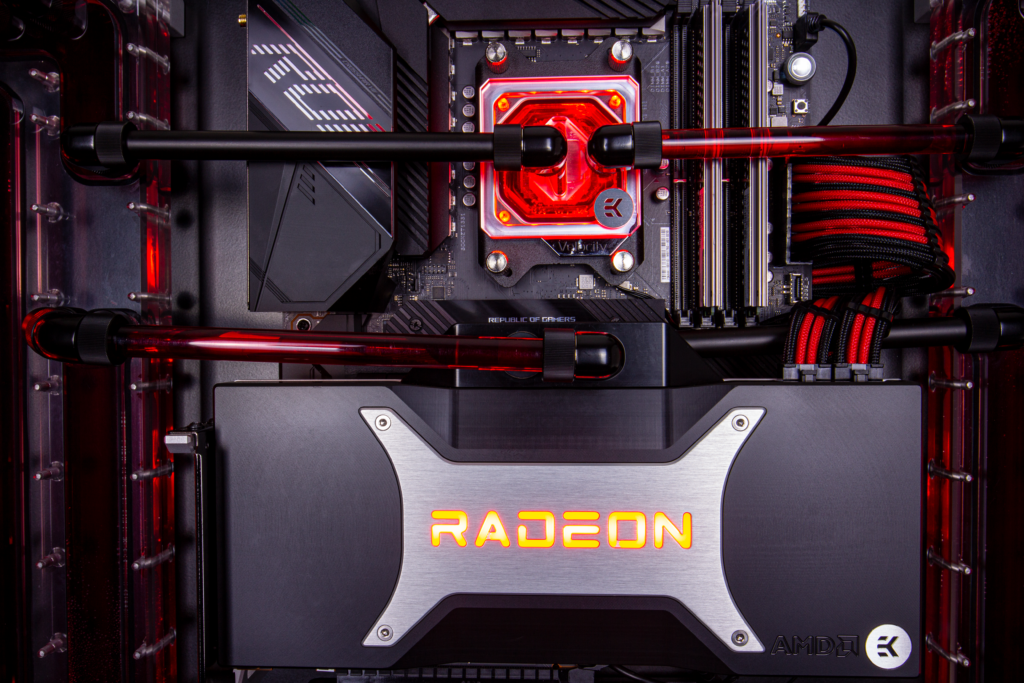
Nvidia has the edge in Ray Tracing performance. They can also gain performance using proprietary DLSS sampling. Direct X12 performance from both Nvidia and AMD is very similar. However, AMD has the edge in traditional rendering on DX11 and at lower resolutions like 1440p and 1080p. The AMD card can reach high core speeds such as 2.65ghz. This was previously only attainable on LN2.
The RTX 30 series from Nvidia is the biggest generational leap in performance for a long time, and in this sense, they are very good. The cards also offer some overclocking potential. Most of the top-end cards are able to maintain above 2Ghz boost plus a substantial boost in memory speed of 500Mhz. When it comes to performance, you can game at 4K with at least 60fps in all games with max settings. Previously you would need to use SLI.
The RTX 30 graphics cards really lend themselves to water cooling. This is what 8Pack is all about and without it, they can run hot. The cards do scale performance wise with this type of cooling which means more overclocking headroom.
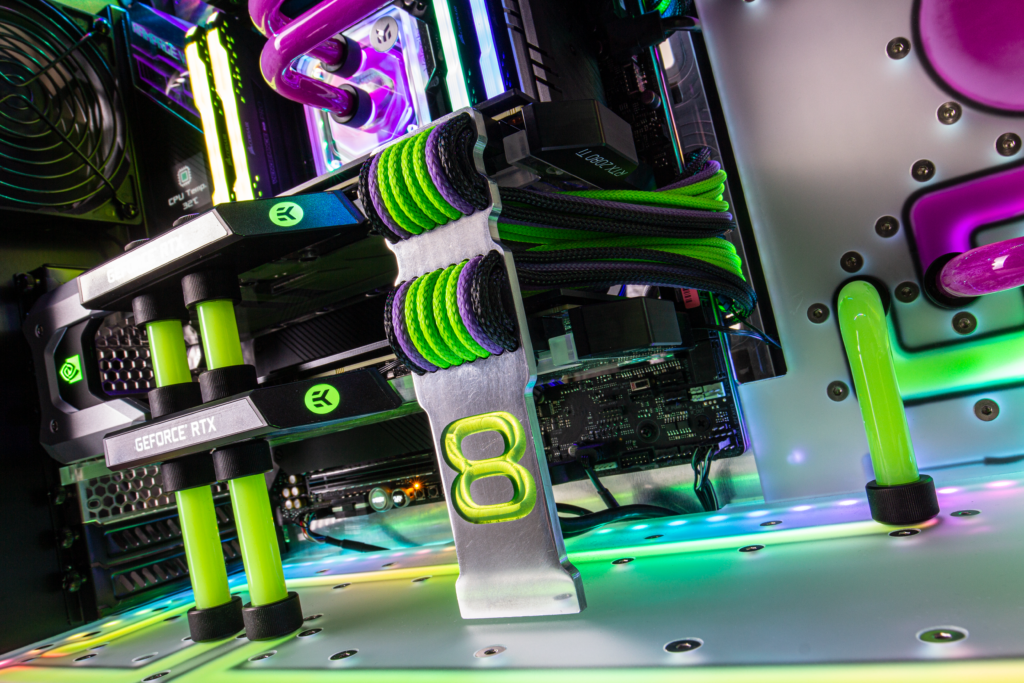
Who buys the 8Pack systems are what are they used for?
I would not say a particular type of customer buys 8Pack systems. It can be anyone from a Sports personality to a company director or a student with a loan to spend!! They all share a craving for high-end performance and bespoke looks.
8Pack systems are used for pretty much everything. A lot of customers are gamers but even more are professionals who want to do rendering, graphic design, simulation, machine learning, structural analysis, high-frequency trading and so on.
Anyone who wants an advantage in an area that will enhance their life or work. This can be frame rate or movie editing to name a couple of examples.
Are 8Pack systems personalised for every user?
Often yes they are. Overclockers can prescribe hardware to overcome bottlenecks that businesses or individuals regularly have. A customer can buy the configs off our website no issue and often do. However, other customers want a more in-depth solution which has the exact tested hardware stack for the workloads they will do on the system.
For this, we have done extensive research with almost all commercial software to give these customers the competitive edge and answer all the questions they have from a hardware standpoint. We also have the in-house capacity to personalise the look in any way the customer requires.
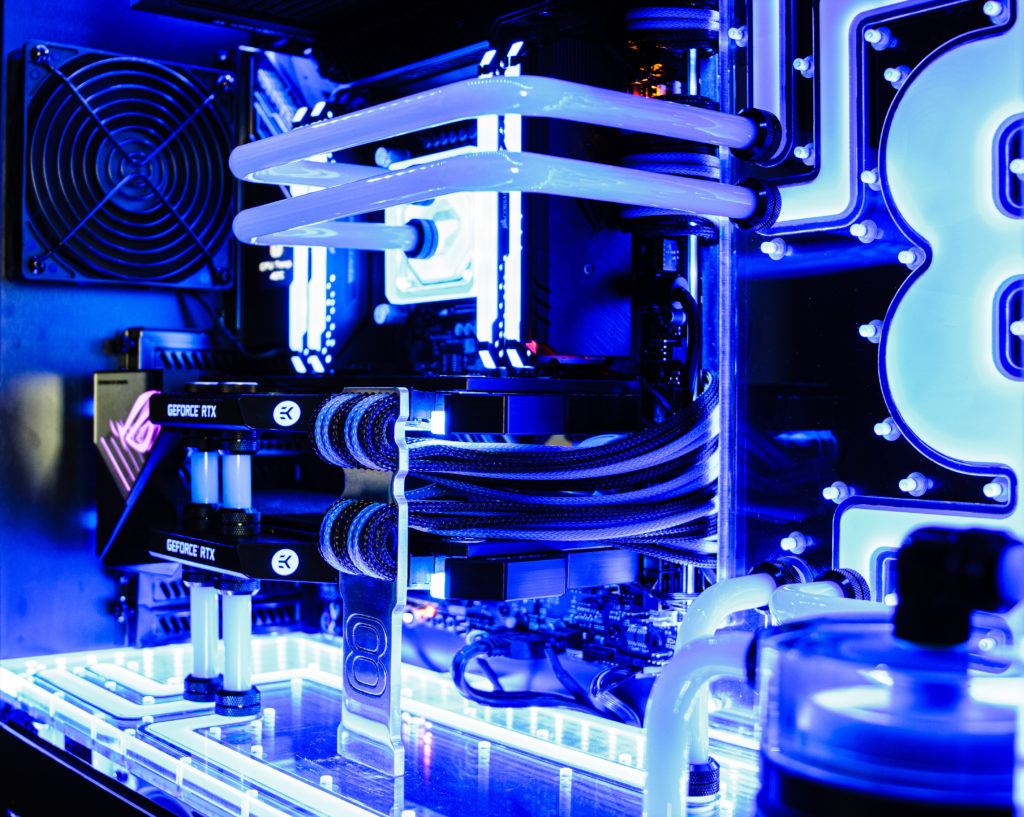
How many people work on creating an 8pack system and how many hours can it take?
A team of highly trained builders construct these rigs. We have a tiered system within OCUK and only master builders can work on 8Pack. This encompasses 4 people to do the main building. Our assistant System Integrator manager and SI manager use the CNC or laser cutter to make parts or do customisations. They also create custom paint jobs in our paint booth.
We also have James from Pexon making high quality modded cables. James ensures every cable required is the correct quality and length. There is also a full-time CAD engineer drawing new designs for mods that customers require. The dedicated hardware expert works in RND. He works alongside me to test all the hardware combinations and bin the components. It’s his job to stability test the machines too. He is a competitive bencher in ambient overclocking with many years of experience in this field.
In total 8Pack rigs take up to 100 hours to assemble and involve up to 10 people.
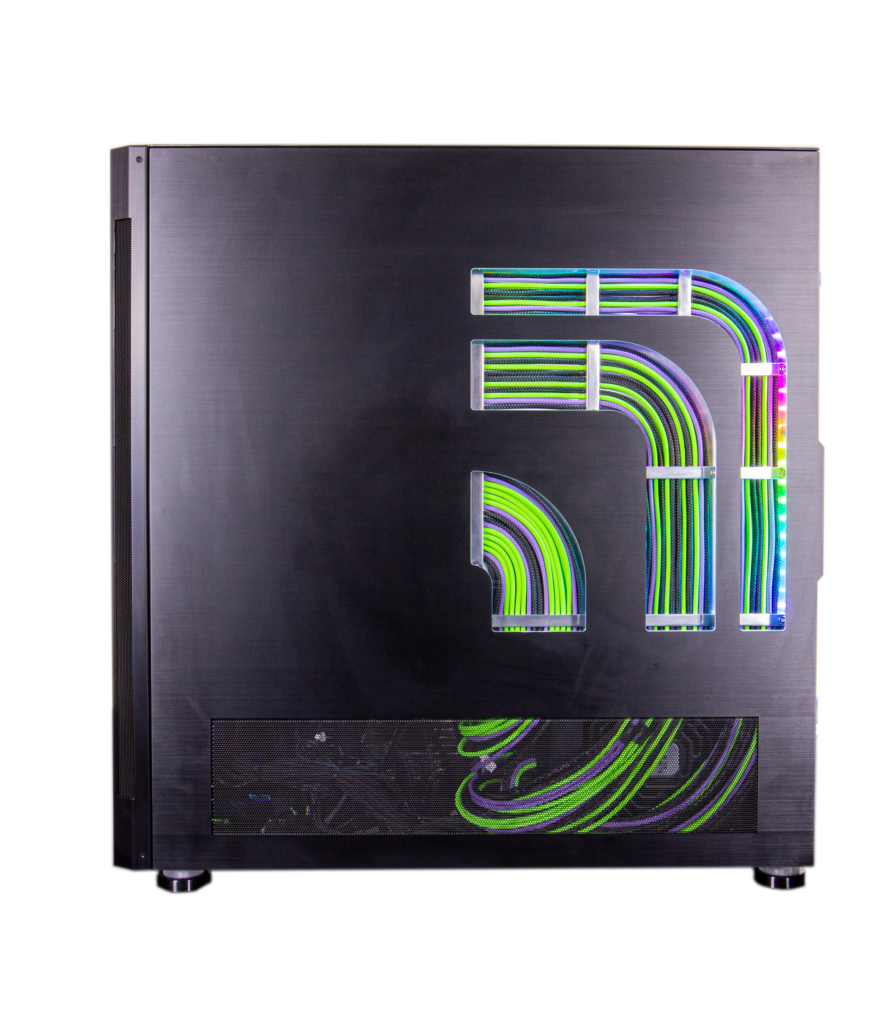
What is your favourite 8Pack PC and why?
Currently, my favourite is the Polaris in terms of looks. Overclockers just redesigned it to incorporate stunning new design features. There are now cable combs built into the motherboard tray and a rear window to see the cable work.
The Frosted perspex reservoirs and passthrough plates create an ultra-clean look. We also designed it, so that the hardware chosen can be installed to create a clean and attractive design.
In terms of Performance, Supernova is my favourite. The components include a 64 core CPU and 256GB RAM in a PC that’s all overclocked. Crazy processing power with up to 4 GPUs… bring it on!
The Future of 8Pack
What new hardware will you be using in the 8Pack systems in 2021?
This is difficult to answer without breaking NDAs. I also don’t have a full road map of forthcoming releases. Before 2021 I will add some AMD GPU offerings into 8Pack systems and also AMD Zen3 processors. Customers of 8Pack will always be able to get the latest and greatest hardware within 8Pack systems to accommodate their needs. 8Pack never compromises! Ever!
What’s your favourite game to play at the moment? What new games are you looking forward to?
At the moment I am hammering COD Warzone and Modern Warfare as well as hammering my keyboard with my fist when I get shot in the back! I am also playing Need for Speed and Dirt 5.
I am actually looking forward to the new COD and will also take a look at Cyberpunk when that finally launches.
Where can readers buy the latest 8Pack PC?
Check out the full range sold at Overclockers UK
Attribution
This article was originally written and posted via https://www.overclockers.co.uk/blog/champion-overclocker-8pack-discusses-new-pc-hardware-in-2020-interview/


